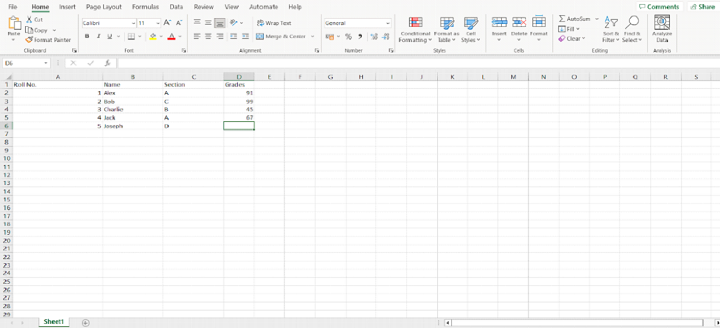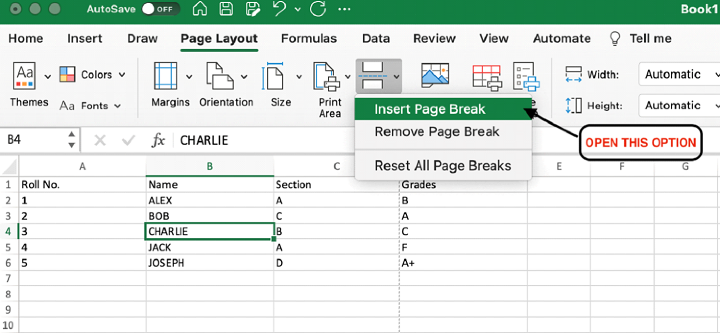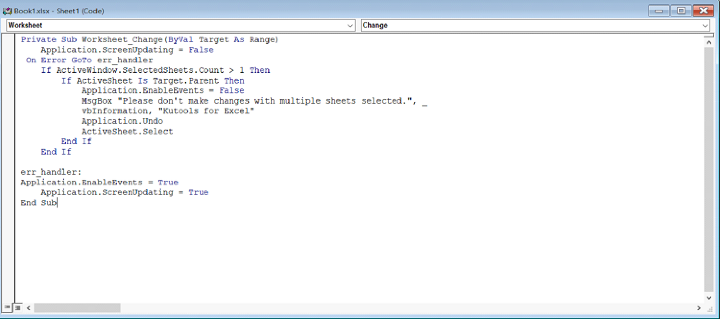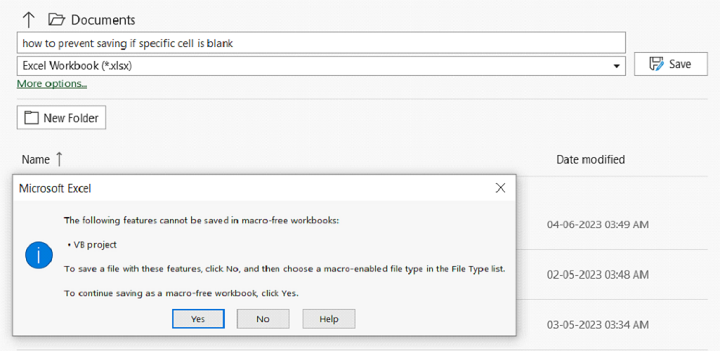
 Data Structure
Data Structure Networking
Networking RDBMS
RDBMS Operating System
Operating System Java
Java MS Excel
MS Excel iOS
iOS HTML
HTML CSS
CSS Android
Android Python
Python C Programming
C Programming C++
C++ C#
C# MongoDB
MongoDB MySQL
MySQL Javascript
Javascript PHP
PHP
- Selected Reading
- UPSC IAS Exams Notes
- Developer's Best Practices
- Questions and Answers
- Effective Resume Writing
- HR Interview Questions
- Computer Glossary
- Who is Who
How to prevent saving if a specific cell is blank?
Introduction
When dealing with Excel spreadsheets, it is essential to keep all data precise and full. Sometimes, you need to make sure a certain piece of data is in a cell before you can save the spreadsheet. In this way, you can be certain that no essential information is missing and that your work will be free of mistakes.
In this article, we'll go through the procedures required to disable saving if a selected cell in Excel is empty, giving you the flexibility to ensure data completeness and the integrity of your spreadsheets.
Why Does it Happen?
If a cell in an Excel spreadsheet is left blank, it might throw off the results of the computation or analysis. Human mistake, neglect, or improper data input are all potential causes. Incorrect analysis, misleading results, or erroneous judgments based on insufficient or inaccurate information might happen if the spreadsheet could be saved without needing data in the specified cell.
To ensure that data is entered into a required field before continuing, you may disable the save function while that cell is blank. This safeguards the authenticity of your data and prevents any sloppy work from creeping in. As a precaution, it ensures that no essential data is left out or forgotten, lessening the likelihood of mistakes and boosting the dependability of your spreadsheets.
A preventative method of data management is to disable saving if a user leaves a particular field blank. Errors in data are less likely to slip through the cracks if they are spotted and fixed quickly. Enforcing data completeness helps you keep your Excel spreadsheets accurate and reliable, which in turn leads to better data quality and more educated decision making.
Here's how to tell Excel on a Mac not to save if a certain cell is empty
Step 1 Open your Excel file.

Step 2 Press Option + F11 to open the Visual Basic Editor.

Step 3 Select the sheet module containing the desired cell by double-clicking on it in the Project Explorer window. Double-clicking "Sheet1" will bring up the Sheet1 module if the cell is located there.

In the WINDOW's MODULE, paste the following code
vba
Private Sub Workbook_BeforeSave(ByVal SaveAsUI As Boolean, Cancel As Boolean)
Dim ws As Worksheet
Dim targetCell As Range
' Set the worksheet and target cell
Set ws = ThisWorkbook.Sheets("Sheet1") ' Replace "Sheet1" with the actual sheet name
Set targetCell = ws.Range("A1") ' Replace "A1" with the specific cell address
' Check if the target cell is blank
If targetCell.Value = "" Then
MsgBox "Please fill in the specific cell before saving.", vbExclamation, "Blank Cell"
Cancel = True ' Cancel the save operation
End If
End Sub
Step 4 Modify the code to specify the actual sheet name and the address of the specific cell you want to check. Update the `Set ws = ThisWorkbook.Sheets("Sheet1")` line and the `Set targetCell = ws.Range("A1")` line accordingly.
Step 5 Close the Visual Basic Editor.
Now, if the designated cell is blank when you try to save the workbook, a dialog box will appear to remind you to complete the cell before saving. Until the cell has data, the saving will be cancelled.

Note that the procedure for opening the Visual Basic Editor may change significantly across Excel for Mac versions.
Conclusion
Excel spreadsheets can only be trusted if the information included inside each cell is comprehensive and correct. This post will show you how to disable saving if a certain cell is empty, protecting your data from accidental changes.
You may check for the existence of data in a certain cell in the workbook module by using VBA code. If the cell is empty during saving, a dialog box will appear warning the user and the save will be aborted.
By taking this precaution, you can ensure that all collected data is comprehensive, which in turn facilitates more precise analysis, reporting, and decision-making. Don't forget to modify the error message so that users can easily understand which cell must be completed before saving.
Using this function, you may improve the quality of your Excel spreadsheets while keeping your data intact, leading to more dependable and effective data management procedures.

